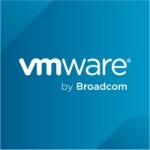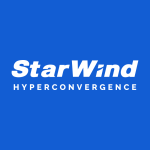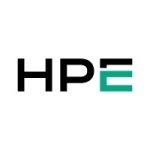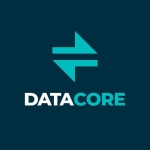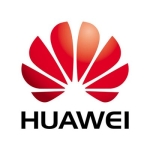VxRail's enhanced resiliency has banished server failure anxieties! VMs now seamlessly migrate to redundant machines, eliminating downtime and the need for tedious maintenance windows. My independence from individual components has soared, leaving me unfazed by fleeting indicators.
It streamlines our VMware administration, transforming what could be a multi-paneled juggling act into a unified, effortless orchestration. Confined to a single, intuitive interface, managing our virtualized environment becomes a seamless, frictionless experience.
The overall energy footprint exhibits a favorable trend, allowing for granular comparisons between individual hardware components. This transparency enables me to discern precise hardware utilization and capacity allocation. Notably, the system's ability to dynamically distribute workload across all computers and servers simultaneously presents a distinct advantage, promoting uniform resource utilization and potentially optimizing energy consumption.
VxRail's implementation has significantly mitigated the frequency and impact of unplanned production disruptions. The introduction of a clustered environment has empowered virtual machines with the ability to autonomously migrate between physical hosts, effectively sidestepping localized hardware or software hiccups. This year, we only encountered two outages, one stemming from a hardware malfunction and the other attributable to an update issue. Excluding the aforementioned hardware failure, downtime was restricted to the brief shutdowns of a mere two or three virtual machines due to isolated component defects. In all other instances, VxRail seamlessly orchestrated the migration of affected workloads to alternate hosts, ensuring continued operational functionality and minimizing business disruptions. This newfound resilience has demonstrably enhanced our ability to weather unforeseen challenges and maintain operational continuity.
The flexibility of VxRail is truly exceptional. Scaling is an absolute breeze, regardless of the project scope. Take, for instance, an upcoming large-scale initiative involving numerous organizations. I can seamlessly integrate additional devices, establish the basic preliminary setup, and trust the system to autonomously adapt with remarkable alacrity.
VxRail aligns seamlessly with our commitment to sustainability. Its modular design and durable components facilitate responsible end-of-life management, allowing us to reintegrate the devices back into the circular economy through convenient recycling programs. Choosing the lease-purchase option further enhances this advantage, ensuring not only initial cost efficiency but also sustainable disposal or potential repurposing of the equipment down the line. This forward-thinking approach positions us favorably for future environmental regulations and demonstrates our unwavering dedication to responsible resource utilization.
While VxRail offers compatibility with AMD processors, its capabilities in this area could benefit from further development.
While my proficiency in English poses no issue, accessing Dell's German support, if necessary, proves slightly more convoluted, a lingering experience from past encounters. While not an insurmountable obstacle, the convenience of readily available German-speaking assistance would be undeniably pleasant. Having such support readily available, particularly during nocturnal hours, would foster a sense of complete coverage, alleviating any potential Sunday inconveniences. However, let me be clear, my present situation is perfectly manageable. Yet, experiencing the fluidity of communication during the aforementioned version eight upgrade, for instance, would undoubtedly have been delightful. Ultimately, though, this pertains more to a minor personal preference than a fundamental flaw with the support itself.
VxRail has truly exceeded my expectations. It's not just a ten out of ten, it's a game-changer. Once we overcome the initial learning curve, we'll be able to operate it with complete confidence, not just in terms of independent usage, but also knowing we have exceptional support readily available to assist with any configuration needs.
VxRail's intuitive design manifests in its remarkable ease of use. The intricate automation behind the scenes operates seamlessly, orchestrating a symphony of tasks with minimal user intervention. Whether we're integrating a new server, its arrival becomes a mere dance of effortless steps. Slide the server into its designated rack, meticulously connect the necessary cables, and with a single press of the designated button, we've summoned a powerful computing resource to life.
Foreign Language:(German)
Minimale Ausfallzeiten, problemlose Skalierung und erstklassiger Support
Was ist unser Hauptanwendungsfall?
Wir nutzen VxRail aufgrund seiner Vielseitigkeit, die es uns ermöglicht, eine Vielzahl von IT-Infrastrukturen innerhalb seines robusten Rahmens zu konsolidieren. Dazu gehören Terminalserver, Router und Firewalls, die alle nahtlos neben den Kundenservern integriert sind, die in virtualisierten Umgebungen betrieben werden. Darüber hinaus können wir mit VxRail unsere Legacy-Hardware-Server migrieren und ihnen neues Leben durch Virtualisierung ihrer Funktionalitäten innerhalb derselben Plattform geben.
Um die Einschränkungen zu beseitigen, die sich aus der mangelnden Skalierbarkeit unserer bisherigen Infrastruktur ergaben, haben wir uns für die Nutzung der Funktionen von VxRail entschieden. Dies hat uns in die Lage versetzt, zusätzliche Servern nahtlos zu integrieren und optimierte Konfigurationsprozesse zu implementieren, was zu einer bemerkenswerten Benutzerfreundlichkeit für das gesamte Team geführt hat. Infolgedessen entfällt die Notwendigkeit umfangreicher Schulungen komplett, da unsere Mitarbeiter dank intuitiver Verfahren die erforderlichen Schritte instinktiv nachvollziehen können.
Wie hat es meiner Organisation geholfen?
Die verbesserte Ausfallsicherheit von VxRail hat die Angst vor Serverausfällen beseitigt! VMs werden jetzt nahtlos auf redundante Maschinen migriert, wodurch Ausfallzeiten und lästige Wartungszeiten entfallen. Ich bin jetzt unabhängiger von einzelnen Komponenten und kann mich von flüchtigen Indikatoren nicht mehr irritieren lassen.
VxRail vereinfacht unsere VMware-Verwaltung und sorgt für eine einheitliche, mühelose Steuerung, was sonst ein komplexer Vorgang ist. Durch die Beschränkung auf eine einzige, intuitive Oberfläche wird die Verwaltung unserer virtualisierten Umgebung zu einer nahtlosen, reibungslosen Erfahrung.
Der gesamte Energieverbrauch von VxRail zeigt einen positiven Verlauf und ermöglicht einen detaillierten Vergleich zwischen den einzelnen Hardwarekomponenten. Diese Transparenz ermöglicht es mir, die genaue Hardwareauslastung und Kapazitätszuweisung zu erkennen. Insbesondere die Fähigkeit des Systems, die Arbeitslast dynamisch auf alle Computer und Server gleichzeitig zu verteilen, ist ein deutlicher Vorteil, der eine einheitliche Ressourcennutzung fördert und den Energieverbrauch potenziell optimiert.
Die Implementierung von VxRail hat die Häufigkeit und die Auswirkungen von ungeplanten Ausfällen im Betrieb deutlich verringert. Durch die Einführung einer Cluster-Umgebung sind virtuelle Maschinen in der Lage, selbstständig zwischen physischen Hosts zu migrieren, wodurch lokale Hardware- oder Softwareprobleme effektiv umgangen werden. In diesem Jahr hatten wir nur zwei Ausfälle zu verzeichnen, von denen einer auf einen Hardwarefehler und der andere auf ein Update-Problem zurückzuführen war. Abgesehen von dem erwähnten Hardware-Ausfall beschränkten sich die Ausfallzeiten auf das kurzzeitige Herunterfahren von lediglich zwei oder drei virtuellen Maschinen aufgrund von isolierten Komponentendefekten. In allen anderen Fällen sorgte VxRail für eine nahtlose Migration der betroffenen Workloads auf alternative Hosts, so dass die Betriebsfunktionalität aufrechterhalten und Geschäftsunterbrechungen minimiert werden konnten. Diese neu gewonnene Widerstandsfähigkeit hat unsere Fähigkeit, unvorhergesehene Herausforderungen zu meistern und die Betriebskontinuität aufrechtzuerhalten, nachweislich verbessert.
Die Flexibilität von VxRail ist wirklich außergewöhnlich. Die Skalierung ist ein absolutes Kinderspiel, unabhängig vom Projektumfang. Zum Beispiel bei einer bevorstehenden umfangreichen Maßnahme, an der zahlreiche Stellen beteiligt sind. Ich kann nahtlos zusätzliche Geräte integrieren, die Grundeinstellungen vornehmen und darauf vertrauen, dass sich das System mit bemerkenswerter Schnelligkeit selbstständig anpasst.
VxRail fügt sich nahtlos in unser Engagement für Nachhaltigkeit ein. Das modulare Design und die langlebigen Komponenten erleichtern ein verantwortungsbewusstes End-of-Life-Management und ermöglichen es uns, die Geräte durch bequeme Recyclingprogramme wieder in die Kreislaufwirtschaft zu integrieren. Durch die Wahl der Option des Leasings und des Kaufs wird dieser Vorteil noch verstärkt, da so nicht nur die anfängliche Kosteneffizienz, sondern auch die nachhaltige Entsorgung oder die potenzielle Wiederverwendung der Geräte gewährleistet ist. Mit diesem weitsichtigen Ansatz sind wir für künftige Umweltvorschriften bestens vorbereitet und demonstrieren unser unermüdliches Engagement für eine verantwortungsvolle Ressourcennutzung.
Was ist am wertvollsten?
Der wichtigste Aspekt von VxRail ist die Garantie für eine gleichbleibende Leistung meiner Systeme, unabhängig von deren geografischer Lage. Dies macht zusätzliche Hardware oder umständliche Konfigurationen überflüssig und sorgt für eine optimierte und sorgenfreie Erfahrung.
Was muss verbessert werden?
Obwohl VxRail Kompatibilität mit AMD-Prozessoren bietet, könnten seine Fähigkeiten in diesem Bereich von einer weiteren Entwicklung profitieren.
Obwohl ich Englisch gut beherrsche, ist der Zugang zum deutschen Support von Dell etwas komplizierter, was ich aus vorherigen Fällen noch gut in Erinnerung habe. Auch wenn dies kein großes Problem ist, wäre es doch sehr angenehm, wenn ein deutschsprachiger Support zur Verfügung stehen würde. Die Verfügbarkeit einer solchen Unterstützung, insbesondere während der Nacht, würde das Gefühl einer vollständigen Abdeckung fördern und mögliche Unannehmlichkeiten am Sonntag mildern. Ich möchte jedoch betonen, dass ich mit meiner derzeitigen Situation vollkommen zurechtkomme. Dennoch wäre es zweifellos schön gewesen, wenn die Kommunikation zum Beispiel während des oben erwähnten Upgrades auf Version acht so reibungslos funktioniert hätte. Letztlich handelt es sich aber eher um eine kleine persönliche Präferenz als um ein grundsätzliches Mängel am Support selbst.
Wie lange nutze ich die Lösung schon?
Ich nutze VxRail schon seit einem Jahr.
Was halte ich von der Stabilität der Lösung?
Trotz zweier separater Hardwareausfälle innerhalb des VxRail-Systems ist die Betriebsstabilität insgesamt bemerkenswert hoch, was ihm eine solide Bewertung von neun von zehn Punkten einbrachte. Diese beeindruckende Widerstandsfähigkeit ist auf das clevere Design des Systems zurückzuführen, bei dem Ausfälle einzelner Komponenten nur minimale Auswirkungen auf die Gesamtfunktionalität haben. Es ist zwar nicht absolut sicher, aber die meisten potenziellen Probleme können ohne wesentliche Ausfälle behoben werden.
Was denke ich über die Skalierbarkeit der Lösung?
Die beeindruckende Skalierbarkeit von VxRail liegt in der Fähigkeit, steigende Workloads durch das einfache Einsetzen von zusätzlichen Servern nahtlos zu erfüllen.
Wie sind Kundenservice und Support?
Der Support von Dell läuft wie eine gut geölte Maschine. Die proaktiven Erkenntnisse aus Cloud IQ geben den Technikern den nötigen Weitblick, um potenzielle Probleme zu erkennen und zu lösen, bevor sie überhaupt auftreten. Dieser proaktive Ansatz hat für uns den entscheidenden Vorteil gebracht. In den seltenen Fällen, in denen es zu Hardware-Fehlfunktionen kommt, ist ihre schnelle Reaktion wirklich beeindruckend. Dass wir innerhalb von drei Stunden neue Geräte erhalten haben, ist ein Beweis für ihr ständiges Bestreben, Störungen zu minimieren und unsere Produktivität zu maximieren.
Wie bewerten Sie den Kundenservice und -support?
Positiv
Wie war die Ersteinrichtung?
Die Ersteinrichtung im Alleingang durchzuführen, wäre zweifellos eine schwierige Aufgabe gewesen, die mit vielen Komplexitäten und Schwierigkeiten behaftet gewesen wäre. Glücklicherweise hat die professionelle Unterstützung durch den Dell-Techniker die Feinheiten des Prozesses aufgeklärt und ihn in ein überraschend einfaches Verfahren umgewandelt. Selbst jetzt, nach der Installation, ist das Optimieren und Anpassen der Einstellungen ein Kinderspiel. Die anfängliche Skepsis ist einer neuen Sicherheit und Einfachheit gewachsen, was ein Beweis für die Klarheit und Wirksamkeit der Schulung ist.
Unsere schrittweise Implementierungsstrategie ist darauf ausgerichtet, verschiedene Funktionen systematisch auf eine automatisierte Ausführung umzustellen, ein Prozess, der mit unvorhergesehenen Herausforderungen verbunden ist. Während der strategische Rahmen schnell festgelegt war, erwies sich die Umwandlung in konkrete Maßnahmen als deutlich mühsamer.
Wie sieht es mit dem Implementierungsteam aus?
Während des komplizierten Prozesses der VxRail-Installation und -Konfiguration hatten wir die unschätzbare Unterstützung eines erfahrenen Technikers von Dell.
Welche Erfahrungen habe ich mit den Preisen, den Implementierungskosten und der Lizenzierung gemacht?
Die Sicherung einer günstigen Vereinbarung mit Dell stellt einen deutlichen Vorteil dar. Auch wenn man vom rein geschäftlichen Standpunkt aus argumentieren könnte, dass die Kosten für VxRail im höheren Bereich liegen, liegt die wahre Bewertung in der Investitionsrendite. Im Grunde genommen ist es eine Frage der Kosteneffizienz und nicht nur der reinen Kosten.
Welche anderen Lösungen habe ich bewertet?
Angesichts unserer etablierten, positiven Beziehung zu Dell und unserer anhaltenden Wertschätzung für ihre Angebote haben wir uns entschieden, keine anderen potenziellen Lösungen zu erforschen.
Welche anderen Ratschläge kann ich geben?
VxRail hat wirklich meine Vorstellungen mehr als erfüllt. Es ist nicht nur eine Zehn von Zehn, es ist ein Game-Changer. Wenn wir erst einmal die anfängliche Lernphase hinter uns gebracht haben, werden wir in der Lage sein, es mit vollem Vertrauen zu betreiben, nicht nur in Bezug auf die unabhängige Nutzung, sondern auch in dem Wissen, dass wir einen außergewöhnlichen Support haben, der uns bei allen Konfigurationsanforderungen unterstützt.
Das intuitive Design von VxRail manifestiert sich in seiner bemerkenswerten Benutzerfreundlichkeit. Die komplizierte Automatisierung im Hintergrund funktioniert nahtlos und führt mit minimalen Benutzereingriffen eine Reihe von Tasks durch. Ob wir einen neuen Server integrieren oder nicht, dessen Installation erfolgt mühelos in wenigen Schritten. Schieben Sie den Server in das dafür vorgesehene Rack, schließen Sie die erforderlichen Kabel sorgfältig an, und mit einem einzigen Tastendruck erwecken wir eine leistungsstarke Rechenressource zum Leben.
Welches Modell nutzen Sie für die Entwicklung dieser Lösung?
Im Hause.









